
The Narwhal picks up National Magazine Award nomination for Amber Bracken’s oilsands photojournalism
Bracken was recognized for intimate portraits of residents of Fort Chipewyan, Alta., who told her...
The troubled Site C dam project is poised for more cost overruns and schedule delays despite repeated assurances from B.C.’s NDP government that the project will be delivered on time and within its revised budget of $10.7 billion.
Details are found in BC Hydro’s unusually frank quarterly report to the B.C. Utilities Commission, filed on Jan. 15, which reveals significant problems with the publicly funded dam amidst the typically positive project updates.
Some of the more serious issues include “significant cost pressures and/or budget increases” since the NDP government approved an additional $2 billion for the project two years ago and a September cost risk analysis showing that the revised Site C dam project budget is already “under pressure.”
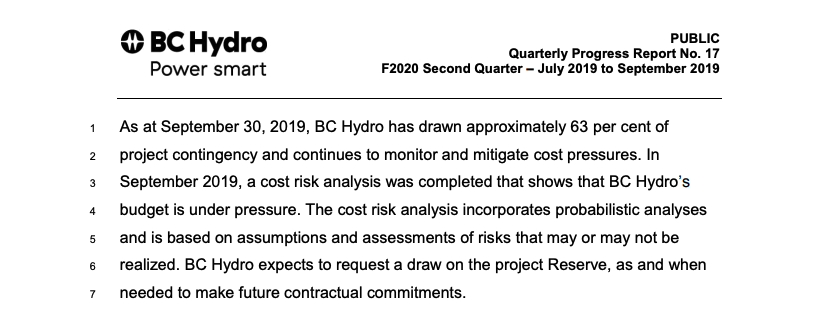
An excerpt from BC Hydro’s latest quarterly report to the B.C. Utilities Commission noting the project’s budget is “under pressure.”
BC Hydro also acknowledged, for the first time, that a fast-approaching and already revised timeline for completing two critical river diversion tunnels is “at risk,” noting issues with the tunnel liner concrete that include falling pieces of concrete chunks as large as 18 metres by three metres.
If the river diversion tunnels are not finished next month as forecast, the Site C project’s long-promised completion date of 2024 could be delayed by one year, adding further to the project’s escalating cost.
“I’m not at all surprised by what’s happening,” former BC Hydro CEO Marc Eliesen told The Narwhal.
“Even given the limited information which is contained in this quarterly report … clearly we’re going to see a project that is upwards of $12 to $13 billion at the end of the day,” said Eliesen, who is also the former chair and CEO of Ontario Hydro, the former chair of Manitoba Hydro and the former chair and CEO of the Manitoba Energy Authority.
“This to me is just shocking and a colossal waste for the ratepayers of the province.”
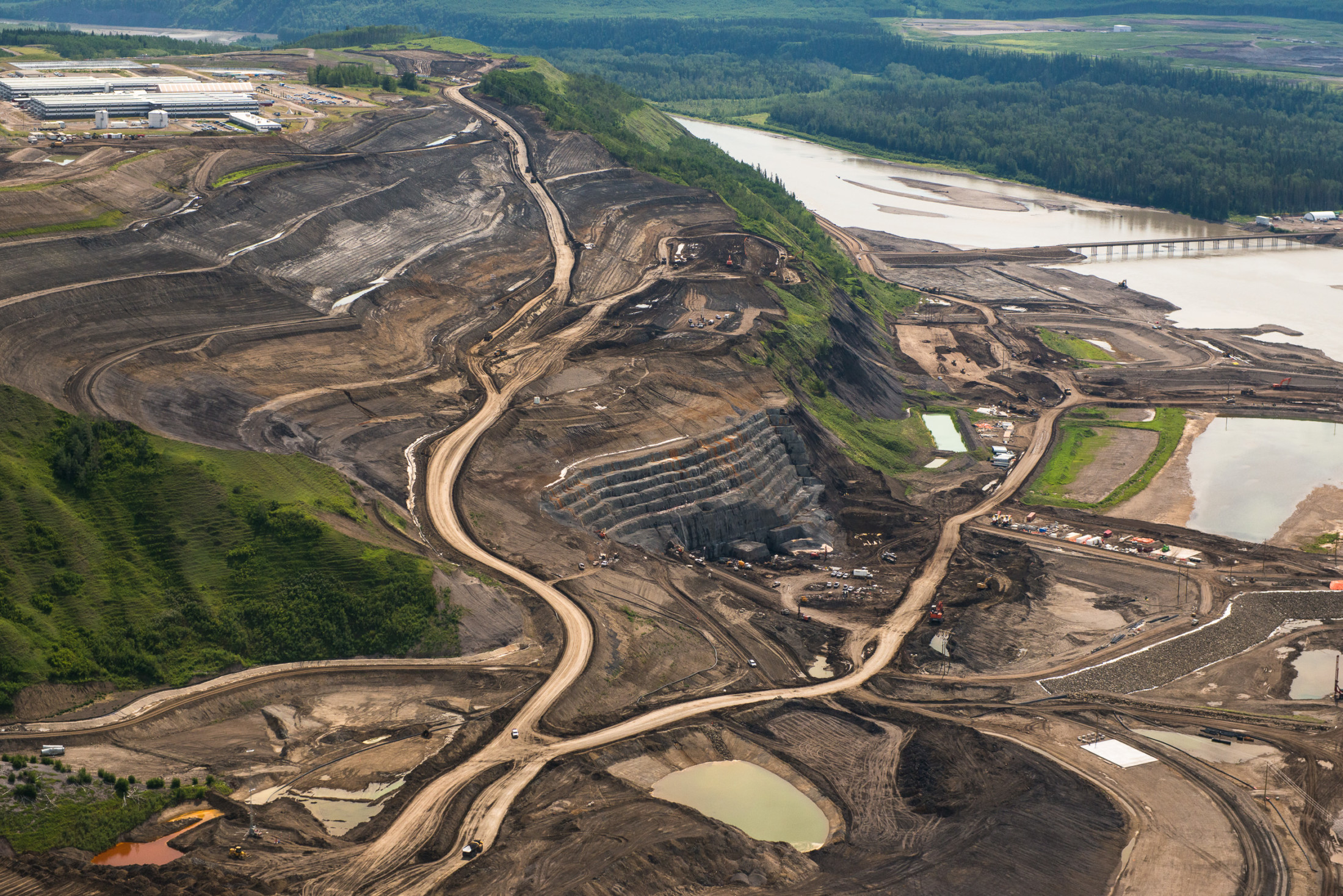
Construction at the Site C dam on the Peace River in the summer of 2018. Photo: Garth Lenz / The Narwhal
The Site C dam was announced in 2010 as a $6.6 billion project. The cost was bumped up to $7.9 billion prior to the deliberations of a panel that examined the project for the federal and provincial governments and drew its conclusions based on that figure.
The project budget subsequently climbed to $8.8 billion when the former BC Liberal government approved the project in December 2014 — after changing the law to strip the watchdog B.C. Utilities Commission of its responsibility to determine if building the dam was in the public interest. It then jumped to $10.7 billion in December 2017.
The Narwhal first flagged the Site C dam’s rising costs in June 2016, when the project was in the preliminary stages of construction. In response to our article, which was based on BC Hydro’s own reports, BC Hydro issued a press release calling our story “inaccurate.”
That BC Hydro press release, claiming the Site C dam is “on budget and on schedule” at $8.8 billion, is still on its Site C dam website.
Eliesen and other energy experts have been sounding the alarm for years about what they say is the unacceptable and unnecessary cost of the Site C dam, which would flood 128 kilometres of the Peace River and its tributaries to produce 680 megawatts of power at average capacity — 1,100 megawatts of power if the project reaches peak capacity.
An independent review of the project’s economics in 2018 by the B.C. Utilities Commission found that 1,100 megawatts of power could be produced by a suite of less destructive renewable energy projects, including wind, for $8.8 billion or less.
Ignoring a warning from the utilities commission that Site C’s cost could exceed $12 billion, the newly elected NDP government moved forward with dam construction in December 2017 with a $2 billion increase in the project’s budget.
Premier John Horgan subsequently set up a “Site C Project Assurance Board” to ensure the cost would not exceed the newly inflated $10.7 billion price tag and the dam would be fully operational in 2024, as promised by successive governments.
This week’s quarterly report — covering a three-month period up to Sept. 30, 2019 — discloses BC Hydro has spent approximately 63 per cent of the project’s $858 million contingency allowance.
“BC Hydro expects to request a draw on the [$708 million treasury board] project reserve, as and when needed to make future contractual commitments,” the report further notes.
In the report, BC Hydro says the Site C dam’s revised budget of $10.7 billion “did not contemplate certain unforeseen financial impacts.”
Those include First Nations treaty infringement claims and an injunction application by West Moberly First Nations, according to the report.
The injunction application, heard in 2018, made an ultimately unsuccessful bid to protect 13 areas of spiritual and cultural significance until the nation’s treaty rights case could be heard.
West Moberly First Nations and Prophet River First Nation have each filed civil actions alleging that the Site C dam and two previous dams on the Peace River constitute an unjustifiable infringement of their treaty rights.
In a recent decision, the United Nations Committee on the Elimination of Racial Discrimination called on Canada to suspend the Site C project — along with the Coastal GasLink and Trans Mountain pipeline projects — until it receives the “free, prior and informed” consent of Indigenous peoples, in keeping with the UN Declaration on the Rights of Indigenous Peoples that B.C. recently enshrined in law.
The Site C dam would flood Indigenous burial sites and traditional hunting and fishing grounds, poisoning bull trout and other food fish with methylmercury.
Eliesen pointed out that treaty infringement settlements could cost more than $1 billion, noting that Horgan himself has acknowledged their potentially high cost.
“These are things that people knew about in advance and they didn’t want to take them into consideration in cost and schedule because they knew it would scare people away,” Eliesen said.
“So we have the very same people, whether it’s the people in government or the people in BC Hydro, who have been continuously wrong with regard to cost and schedule.”
BC Hydro also noted the Site C project is experiencing material cost pressures due to contractor delay and other unspecified claims, additional labour resource requirements, worker accommodation expansion and estimated site reclamation costs.
Eliesen said it “doesn’t take a space scientist” to figure out that highly competitive jobs on other major resource projects in B.C. — including the LNG Canada project and Trans Mountain pipeline expansion — will have an impact on the Site C project in terms of labour availability and cost.
“This was to be expected,” he said. “It’s going to impact the cost, there’s no question about that. It’s going to be significant. And that has never been included in the overall estimate and the overall cost.”
Ken Boon, president of the Peace Valley Landowner Association, which represents 70 local landowners impacted by the Site C dam, said it might still be cheaper to cancel the project than for construction to continue.
“Maybe financially we’re still not at the point of no return,” Boon said in an interview, referring to former B.C. premier Christy Clark’s pledge to ensure the project reached what Clark called “the point of no return.”
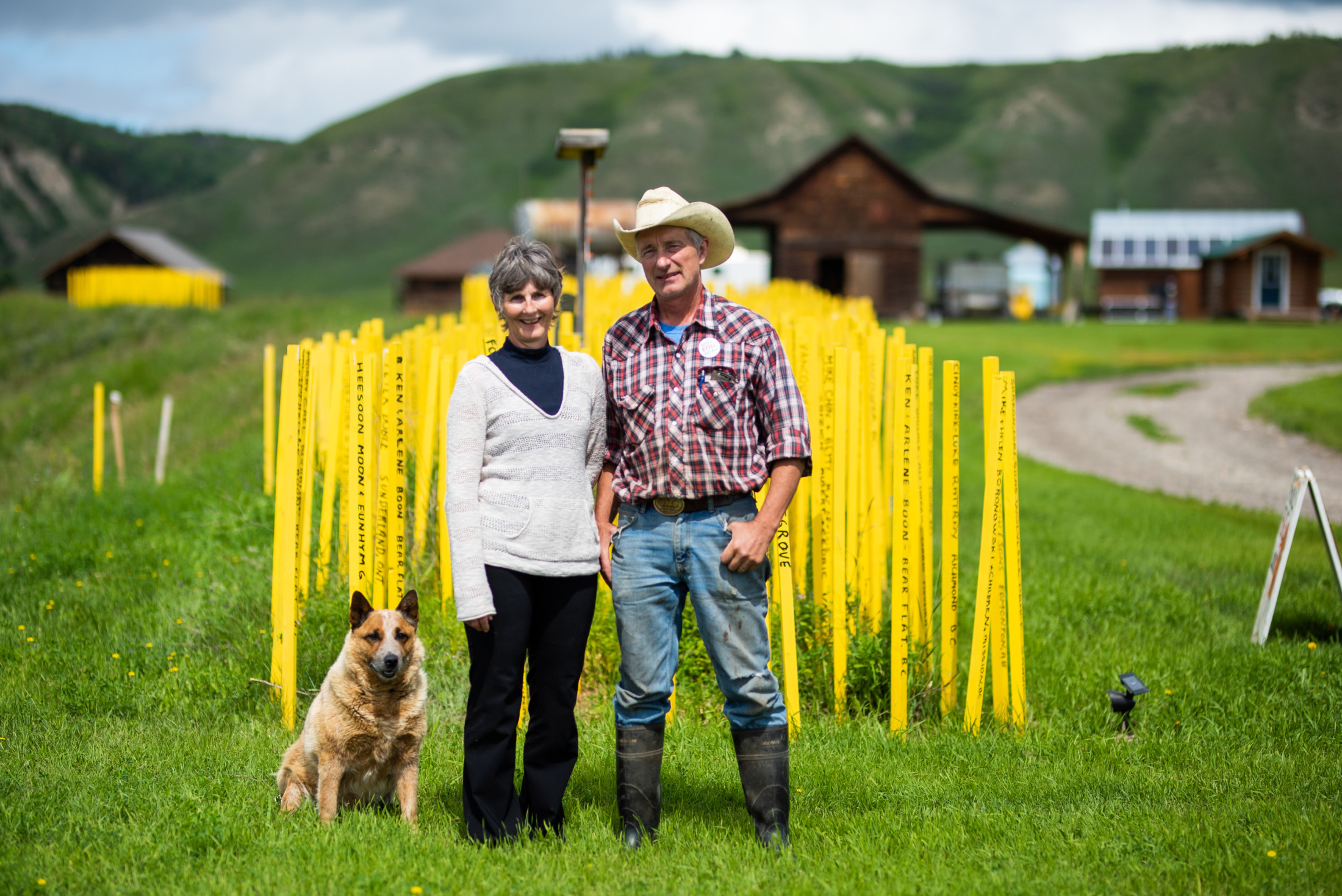
Ken Boon stands with his wife, Arlene, in front of hundreds of yellow stakes on the couple’s third-generation family farm. The stakes each represent a $100 dollar donation to First Nations’ legal challenges of the Site C dam project. Photo: Jayce Hawkins / The Narwhal
“What we’re seeing in this quarterly report is what we’ve all feared and what we’ve predicted — that it’s a project just rife with problems. And we’re looking now at cost overruns,” Boon said.
“These megaprojects like dams just continue to skyrocket out of control cost-wise while the clean and green renewables continue to drop in price. This quarterly report just speaks to that happening with the Site C dam.”
Eliesen noted there is “not one word” in the quarterly report about the financial risks to the Site C dam’s construction and operations that are posed by fracking in the Peace Valley area — risks that “BC Hydro’s own safety engineers have attempted over the years to bring to the attention of senior management and the government unsuccessfully.”
The Peace Canyon dam, 83 kilometres upstream from the Site C dam, is built on weak, unstable rock and officials warn could it fail in an earthquake triggered by a nearby natural gas industry fracking or disposal well operation.*
Other issues cited in the report include safety incidents for workers and a major left bank excavation that is behind schedule due to contractor concerns about slope safety.
The banks of the Peace River Valley are notoriously unstable. A major landslide last year, very close to the dam site, renewed calls for an independent safety investigation of the project.
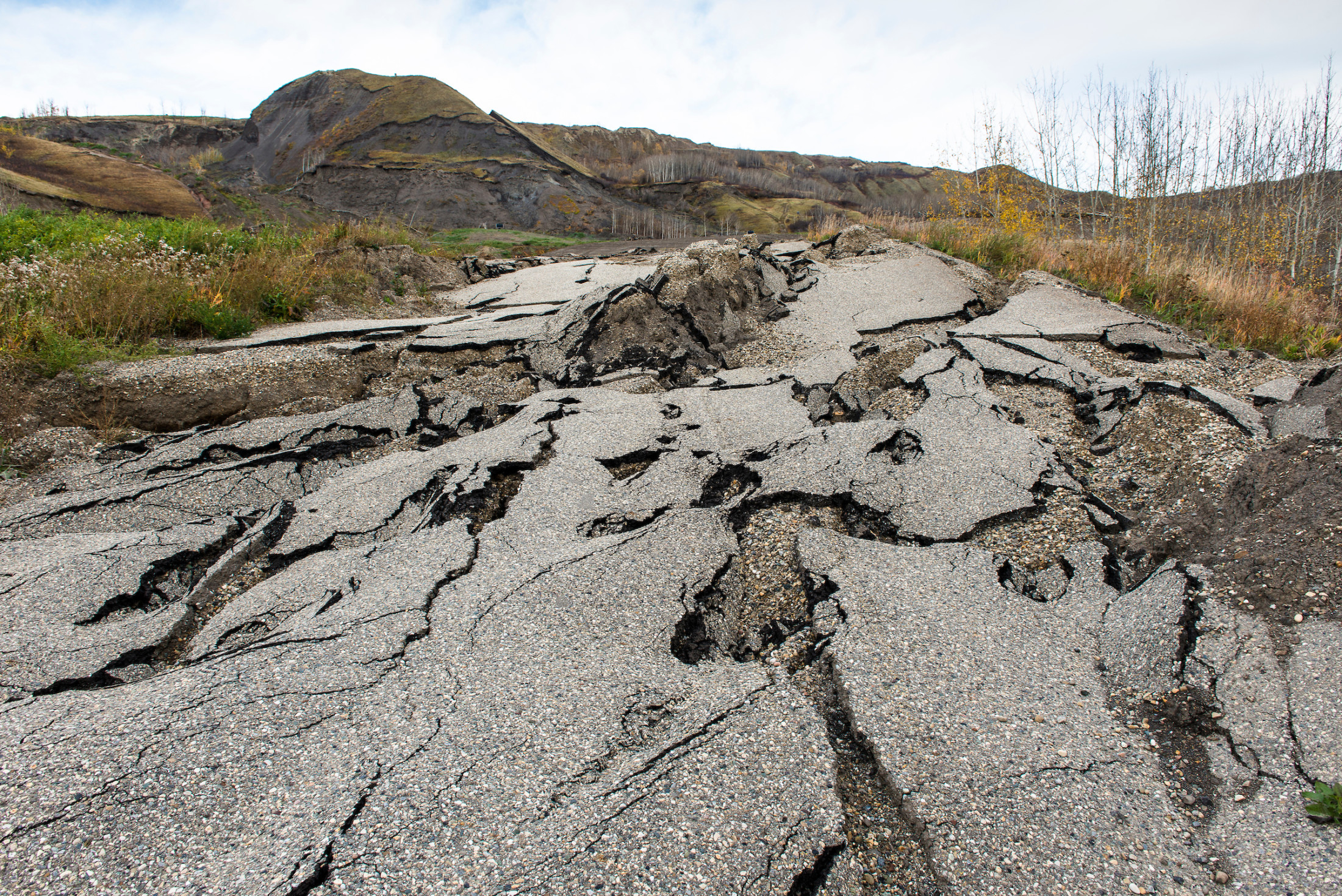
A landslide in late 2018 destroyed a portion of the Old Fort Road, a short distance from the Site C dam project. Photo: Garth Lenz / The Narwhal
The report also highlighted other troubling issues that could affect the project’s schedule and cost.
Less than one-half of the steel for penstocks had been fabricated by the end of September as planned, according to the report, which said BC Hydro is working with the generating station and spillways contractor to “recover” the schedule.
The report further noted “instances of resistance” from the contractor responsible for the majority of turbine generator components in providing BC Hydro’s local inspectors access to its São Paulo manufacturing facility for surveillance inspections. BC Hydro said it is addressing the situation through regular meetings with the contractor.
Boon said until he read the report he wasn’t aware of a left bank drainage adit — a horizontal passageway that can be used for drainage — that will cross above the diversion tunnel.
“That just sounds like a recipe for problems,” he said. “What it indicates to me is they’re having water or drainage issues on that north bank. We know the north bank has been an ongoing problem for them with stabilization and water.”
“Obviously if you can’t divert the river you can’t build a dam and they’re having some real problems there.”
Eliesen said the last time British Columbians received up to date and comprehensive information about project costs, schedule and areas of risk was in the fall of 2017 when the B.C. Utilities Commission reviewed the economics of the project.
“Now we only get on a quarterly basis, months after, the information that BC Hydro wants released,” he said.
“There’s no independent analysis. There’s no independent reporting, contrary to what Horgan promised in December [2017]. He said there was going to be an independent quality assessment outside of BC Hydro. That never took place.”
All findings of the Site C Project Assurance board have been kept secret by the B.C. government and BC Hydro.
Six BC Hydro directors sit on the assurance board, according to court documents. They include John Nunn, who was Site C project’s chief project engineer. Nunn worked for the engineering and consulting firm Klohn Crippen Berger, a Vancouver-based company that holds a current contract, along with SNC-Lavalin, for “design services” on the Site C project.
“So there’s no independent look at what BC Hydro is doing and to advise the ratepayers of what’s been happening,” Eliesen said.
“Even with these quarterly reports, it’s a very secretive project,” Boon said. “As before, the people are kept in the dark other than to read through these quarterly reports and try to glean what they can.”
Despite the red flags about cost pressures on the Site C dam budget, BC Hydro says in the report, in a carefully worded sentence, that it “continues to manage the project within the approved budget of $10.7 billion.”
In a prominently displayed table assessing the status of the project, BC Hydro assigns a “yellow” status to the categories of cost, schedule, overall project health, litigation and safety — denoting “moderate issues.” According to the table, a green dot indicates a category is on track to meet project targets.
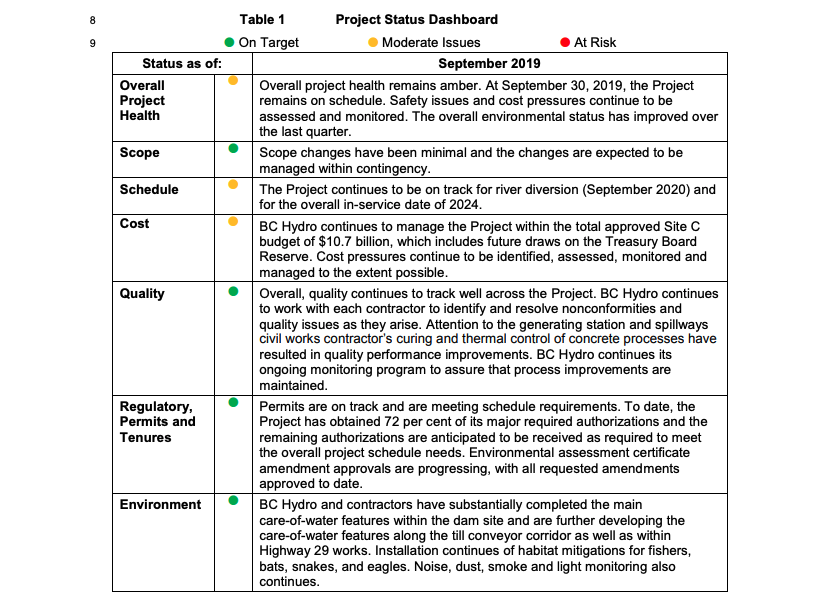
Coloured dots denote risk in BC Hydro’s recent report.
Green dots were assigned for seven out of 12 categories, including for Indigenous relations, the “quality of work” and project permits and authorizations, more than one-quarter of which are still outstanding.
“There are no red dots,” Eliesen noted. “There are yellow dots from their estimation. Maybe if someone independent did it there would be a lot of red dots of major risk.”
In another carefully worded statement, BC Hydro notes in the report that a new “optimized” schedule to complete the diversion tunnels will still achieve “the key schedule milestones associated with river diversion in fall 2020,” raising questions about whether or not that means the river diversion will go ahead as planned.
In response to questions from The Narwhal, the B.C. energy ministry said the Site C project “remains on schedule for achieving an in-service date of 2024 and BC Hydro continues to manage the project within the $10.7 billion budget.”
The ministry also said BC Hydro is on track for river diversion in 2020, noting the concrete tunnel lining process is, on average, about 50 per cent complete. It also said the lining is nearing completion in one tunnel, hinting that lining in the second tunnel is far from complete.
“The lined tunnels, and related intake and outlet structures at either end, are scheduled to be completed in early 2020 in advance of river diversion,” the ministry said.
The ministry also noted that BC Hydro’s quarterly reports on the Site C project “are reviewed and approved by the Project Assurance Board.”
The ministry did not answer a question about why the project assurance board’s findings are not public.
*Updated Jan. 31 at 12:20 p.m. The following clause was removed: “The Site C dam will be completely dependent on the Peace Canyon dam…” In fact, the Site C dam will be hydrologically dependent on the W.A.C. Bennett dam, about 23 kilometres upstream from the Peace Canyon dam.
Get the inside scoop on The Narwhal’s environment and climate reporting by signing up for our free newsletter. Angello Johnson’s shoulders burn, and his arms...
Continue reading
Bracken was recognized for intimate portraits of residents of Fort Chipewyan, Alta., who told her...

A guide to the BC Energy Regulator: what it is, what it does and why...

The B.C. government has introduced legislation to fast track wind projects and the North Coast...
